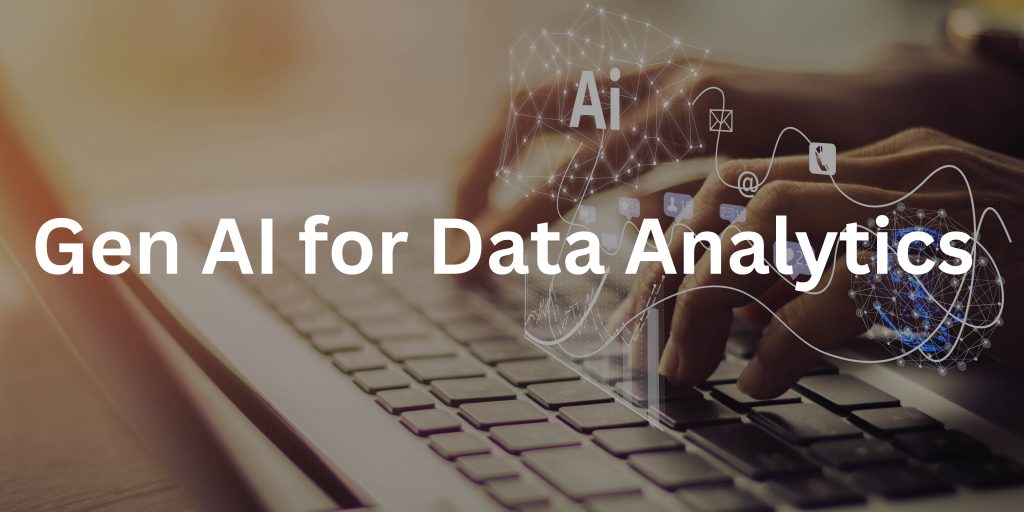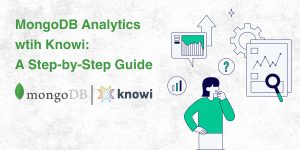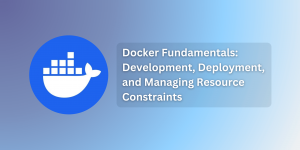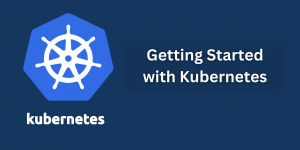Gen AI represents a seismic shift in traditional data analytics methodologies, revolutionizing how businesses extract value from their data. By utilizing the power of machine learning algorithms, Gen AI allows for unparalleled analysis, interpretation, and even the generation of human-like texts from vast datasets. This transformative technology not only improves accuracy and efficiency but also provides real-time insights and predictive analytics at scale. From automating data processing to offering increased decision support through holistic analysis, Gen AI empowers organizations to make smarter decisions and increases performance.
Understanding Gen AI
Generative AI (Gen AI), also known as Generative Adversarial Networks (GANs) in some contexts, is a subfield of Artificial Intelligence (AI) focused on creating entirely new data, rather than simply analyzing existing data. Gen AI uses algorithms trained on massive datasets to learn the underlying patterns and relationships within that data. This allows the models to not only recognize existing patterns but also generate entirely new data that closely resembles the training data. Gen AI can produce original content, like realistic images, creative text formats (poems, code, scripts), or even musical pieces.It heavily relies on vast amounts of training data to learn and produce realistic outputs.
Traditional AI approaches primarily focus on analyzing existing data to categorize data points (e.g., spam filter identifying spam emails) and Forecast future events based on historical data trends (e.g., weather prediction models). Gen AI, however, goes beyond just analyzing. It goes into the realm of creation. Instead of solely classifying or predicting, Gen AI can produce original content that adheres to the learned patterns from the training data.
Gen AI for data analytics – Some use cases
Generative AI, particularly large language models (LLMs), offers a potent solution for accelerating the development lifecycle through code generation. Although not intended to entirely replace well-structured code, the automatic generation of template code or repositories of previously created code for specific use cases significantly expedites delivery timelines. For instance, in analytics query writing scenarios, such as resolving syntax issues in Knowi (an end to end data analytics platform),Generative AI integrates with the query writing process, suggesting the right syntax for the queries required. This eliminates the need for individuals to be proficient in specific language and accelerates the output delivery.
The accessibility of broad-based LLMs has simplified the implementation and roll-out of chatbots for customer service. By integrating chatbots within front-end analytics, organizations can strengthen the contextual dimension of reporting independently of visualizations. Cloud platforms offer data-in features to deploy cognitive search services and off-the-shelf LLMs against proprietary datasets, lowering the barrier to entry. These chatbots can be seamlessly integrated into workflows via API integration endpoints or native app deployment, with open-source frameworks like LangChain providing additional deployment flexibility.
Generative AI facilitates the auto-generation of visualizations and chart elements based on auto-prompt suggestions from BI tools’ native AI capabilities. This capability extends to constructing entire report layouts, significantly reducing the time and effort required for creating new dashboards and refining existing visualizations that may have become less intuitive over time. By automating these processes, organizations can maintain consistency and streamline dashboard development.
Generative AI enables the creation of lightweight application interfaces that use API calls to GPT and LLM models for simple action/trigger response apps. For example, organizations can train GPT to adopt the persona of a customer service agent or extract key information from a company intranet and return it via a form application. Simple automations, such as form email responses to inbound inquiries or trigger-based email generation, can also be implemented efficiently using Generative AI, enhancing workflow automation capabilities.
Automating Repetitive Tasks and Streamlining data analysis
Generative AI (Gen AI) also holds immense potential for automating repetitive tasks and streamlining data analysis workflows.
- Automating Data Cleaning and Preprocessing:
- Real-world data often contains inconsistencies, missing values, and outliers. Gen AI can automatically identify and address these issues. For example, it can help in filling in missing numerical values by learning the patterns within the existing data. Gen AI can also automate tasks like data normalization, feature scaling, and data type conversion. This saves analysts significant time and effort.
- Feature Engineering:
- Gen AI can automatically generate new features from existing data. These new features might hold hidden insights that traditional analysis might miss. For example, identifying relationships between seemingly unrelated data points to create a new feature that aids in classification or prediction tasks.
- Data Augmentation:
- Training AI models often requires vast amounts of data. Gen AI can artificially create new data points that mimic the existing data distribution. For example, generating synthetic images to enrich an image recognition model’s training dataset.
- Report Generation:
- Gen AI can automatically generate reports based on the analyzed data. This includes tasks like summarizing key findings, creating visualizations, and even drafting textual reports.
- Interactive Data Exploration:
- Gen AI can be integrated with chatbots or virtual assistants to facilitate interactive data exploration. Users can ask questions in natural language, and Gen AI can retrieve and present relevant data insights.
- Streamlining Workflows:
- By automating repetitive tasks, Gen AI frees up analysts’ time to focus on more strategic aspects of data analysis, like interpreting results and drawing actionable conclusions. Automation significantly reduces the time required to complete data analysis tasks, leading to faster decision-making and improved overall workflow efficiency. For example, imagine a company analyzing customer purchase data. Traditionally, analysts would spend a significant amount of time cleaning the data, creating new features, and generating reports. With Gen AI, the system can automatically:
- Clean and preprocess the data.
- Generate new features that might indicate buying patterns.
- Create data visualizations and draft reports highlighting key trends.
This allows analysts to focus on interpreting the insights and potentially uncover hidden customer preferences that can inform marketing strategies and product development.
Leveraging Gen AI for data analytics effectively
1. Grasping the Fundamentals:
- Understanding Open Platforms: Familiarize yourself with how open platforms like ChatGPT function. This includes learning how to structure prompts effectively and adjusting settings like “temperature” to influence the tone of the generated responses.
2. Setting Standards:
- Master Prompting: For consistent content creation across an organization, establish a standard “master prompt.” This involves defining the organization’s identity and the desired communication tone for the LLM (Large Language Model). This allows for a consistent voice and reduces inconsistencies.
3. Cost Management:
- Understanding Cost Structure: There’s a significant cost difference between individual and large-scale organizational use of GAI. Carefully plan cost optimization strategies to avoid exceeding budgets during implementation.
- Track Usage: Monitor costs and usage patterns closely during development. Restrict access initially to control research and development (R&D) expenses.
4. Data is Key:
- Solid Data Strategy: Before deploying GAI, understand where your data resides, how it’s maintained, and establish strong data governance protocols. This leads to better data security and responsible usage.
5. Defining Purpose:
- Identify Use Cases: GAI is a tool, not a solution itself. Identify core organizational processes where GAI can automate workflows and improve efficiency.
6. Prioritizing Data Privacy:
- Data Security: Make sure only authorized data, following proper protocols, is fed into your LLMs. Leverage features like disabling chat history in tools like ChatGPT. When using major cloud platforms, understand their data retention policies and data storage practices.
7. Data Enrichment:
- Continuous Data Improvement: For impactful internal LLM usage, continually enrich your data and supporting metadata. Open-source LLMs like ChatGPT are effective because they process vast amounts of information from the internet. The quality and volume of your corporate data for training will significantly impact the effectiveness of your LLM compared to open-source models.
8. Choosing the Right LLM:
- General vs. Domain-Specific: Select the LLM that aligns with your needs.
- General LLMs: Suitable for broad applications.
- Domain-Specific LLMs: Trained on data specific to your industry (e.g., BloombergGPT for finance) and understand relevant terminology within your prompts.
9. Cloud Platform Expertise:
- Understanding Cloud Services: Cloud providers like AWS, Microsoft, and Google offer LLM development and deployment tools. Each platform has its approach to data storage, databases, and other services required for LLM functionality. Gain a firm grasp of these services to effectively deploy chatbots and GAI applications.
- Cost Awareness: Be mindful of the usage-based cost structure of your chosen cloud platform, especially when deploying solutions to a wider audience.
In conclusion, Generative AI marks a significant milestone in the field of data analytics, offering new capabilities to businesses across various industries. From automating repetitive tasks and streamlining data analysis workflows to enabling the integration of new capabilities in code generation, chatbots, and report generation, Generative AI empowers organizations to extract deeper insights and make more informed decisions. By understanding the fundamentals of Generative AI, establishing standards for usage, managing costs effectively, prioritizing data privacy, and choosing the appropriate models and platforms, businesses can leverage Generative AI to its full potential and gain a competitive edge in today’s data-driven world.






